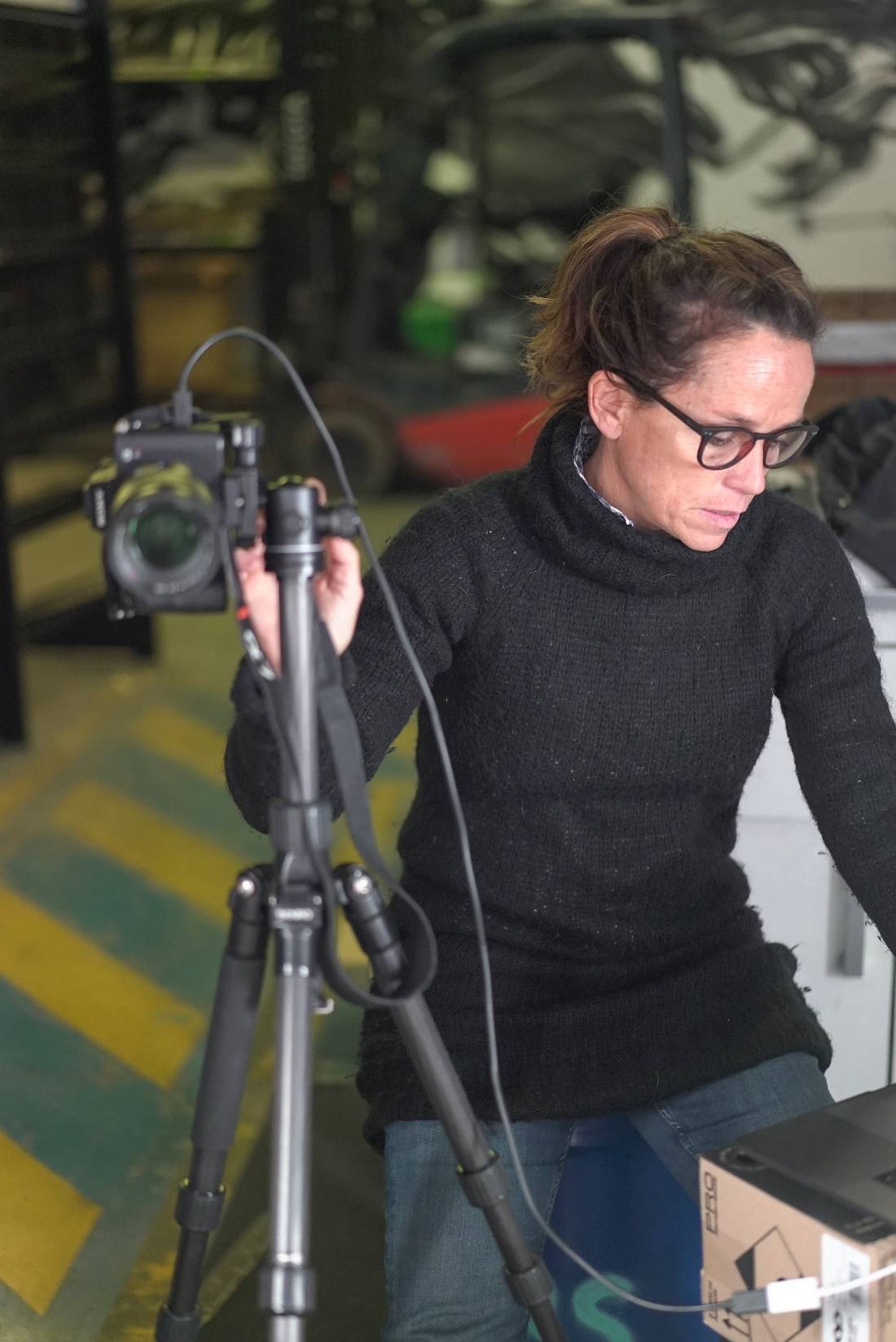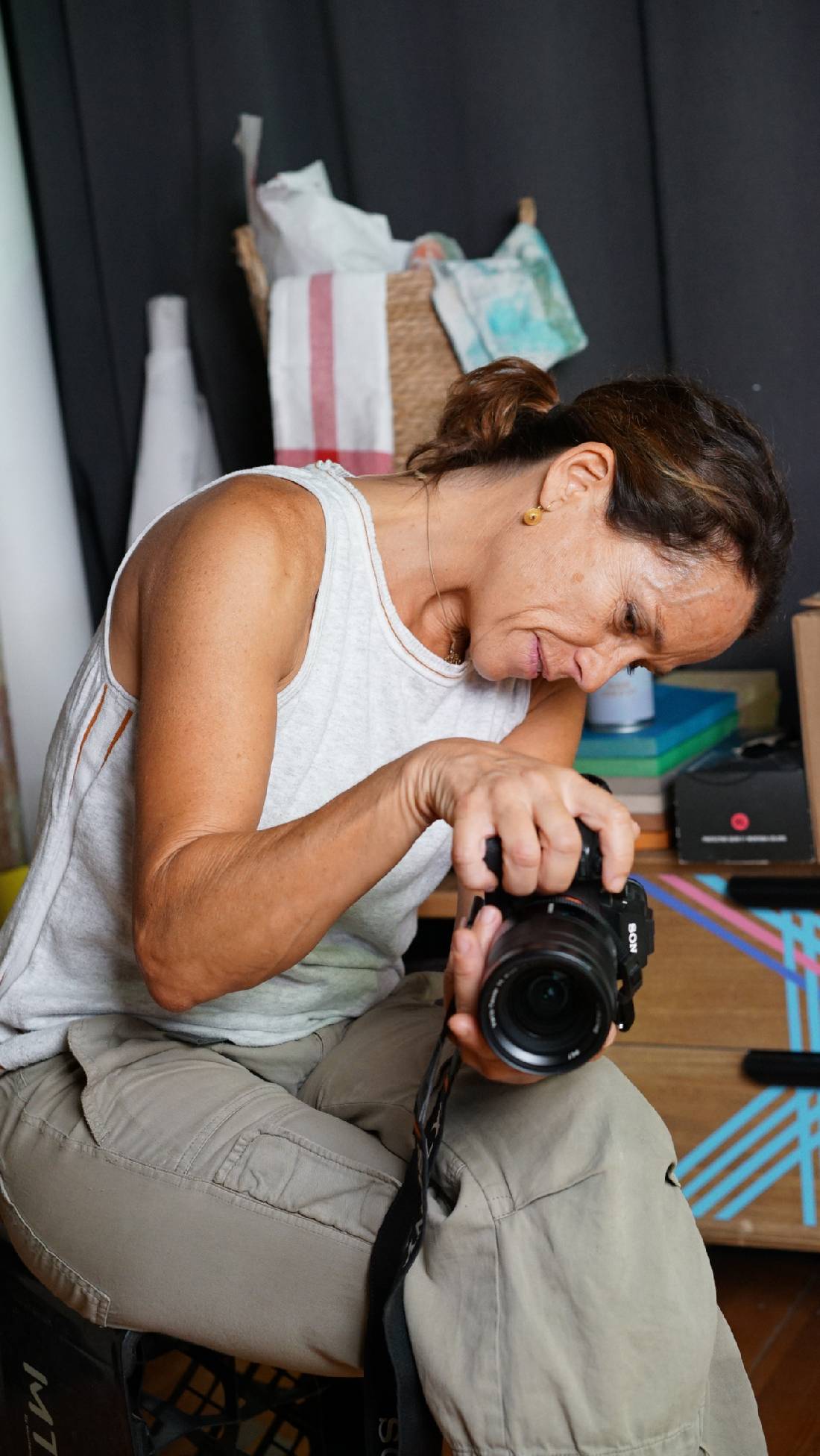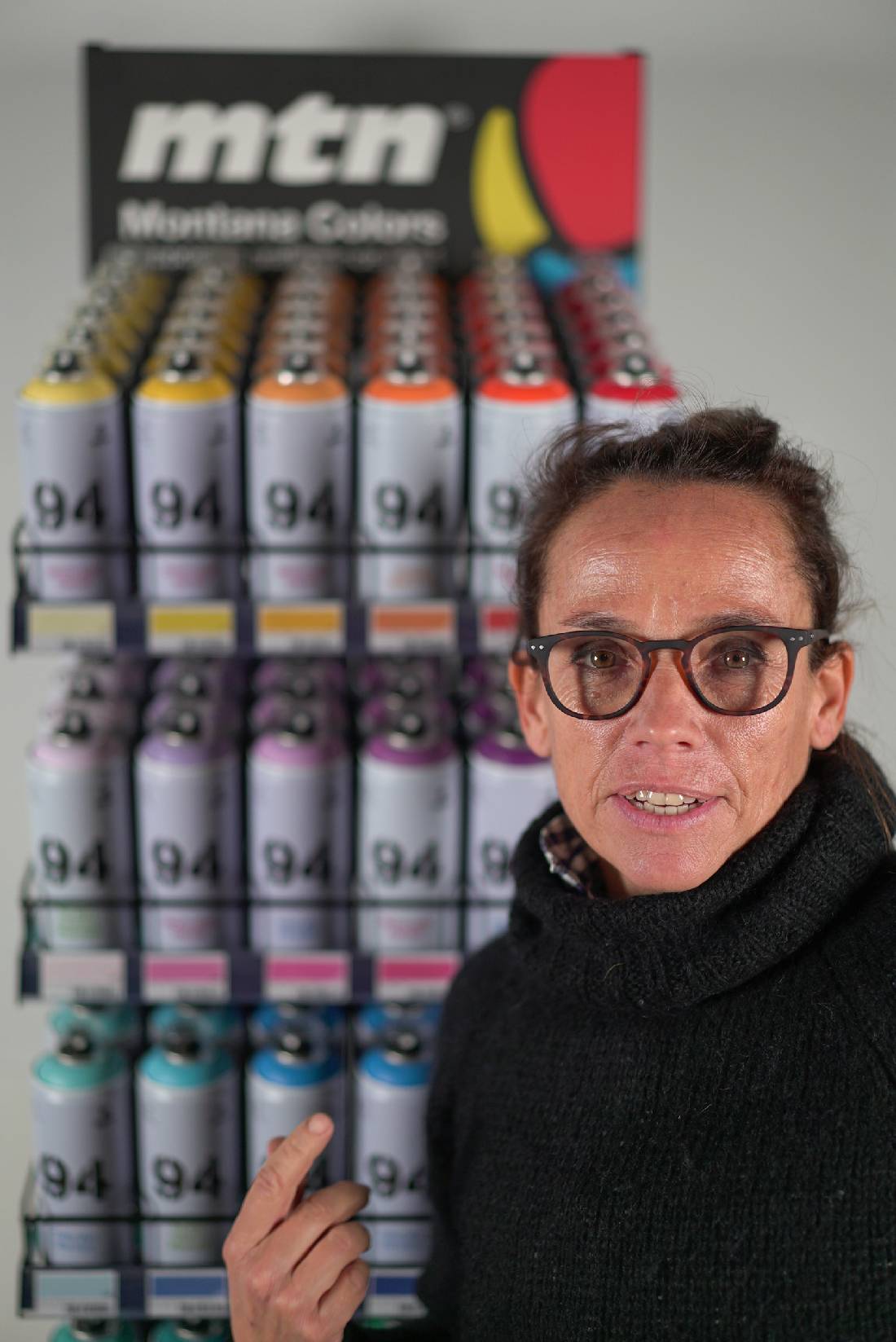- About MTN
Would you like to stay up to date on the latest MTN world news? Products, graffiti, murals, festivals, art and much more.
Return An Interview with Mar Roig, Photographer and Graphic Designer
Mar Roig is one of the key figures in the history of Montana Colors. Her work at the company dates back to the beginning of the adventure, and her role in it has changed over the years. Sitting down to talk to Mar, we found out how the evolution of a business project can be reflected in the personal evolution of an individual. Perhaps more importantly, we also learn the origin of the human values that guide Montana Colors.
You’re one of the people who’s been working longest at Montana Colors. What roles have you had during this time?
In the beginning of the history of Montana Colors, I was in charge of all the graphic design and, outside of what I considered work, I went on the first international trips where I helped translate, organized our first internal events and designed the different Montana Colors premises and stands at trade fairs. I also designed the clothes, both staff uniforms and the clothes we sell.
Today we have a whole team in charge of graphic and product design. It’s much better, of course. At one point, I began to take photos of the factory facilities, festivals and products, and I ended up staying in the photography department.
Many people don’t know that one of the things you’re responsible for is the design of the Montana logo that we call “La Bola.” What was it inspired by? What does it represent for you?
The meaning of the ball is simple: colors and world. Jordi Rubio told me that he needed a logo to frame these ideas, and at that time I thought of several organic shapes and colors, that together would make a shape as round as possible. However, I didn’t have much time to develop the idea, as it was a bit urgent. After several sketches and tests, we came up with the logo, which has actually changed a lot since then, especially the colors.

Many graffiti writers have gotten this logo tattooed. How does this make you feel?
Well, when I first saw the logo tattooed, I was surprised, of course. Now, I see it as a badge of passion representing a very deep connection with graffiti. Obviously I feel some personal pride, but the meaning for me is different. Behind each logo and tattoo there is a story. Some people I’ve met with the tattoo have powerful and inspirational stories about evolution and passion.
You’re currently in charge of many photography projects for Montana Colors. Where do your influences come from? What kind of photography do you like the most?
As I mentioned, I started taking photos for Montana Colors because we needed images for catalogs and presentations, and I liked photography. I didn’t study photography but I took some courses and more recently, specific training on product photography, which is what I do most.
Personally, if I have to say which photography I like, I like all types: from advertising to photojournalism, urban, landscape and action photography. Obviously, I lean more towards nature photography, which is the space where I feel more comfortable.
If I have to mention names, maybe I’d tell you the ones I've been following lately, like Vincent Munier, Jimmy Chin, Marina Cano and Paul Nicken. And I can’t forget about the great Martha Cooper.
In the early years, you combined your work at Montana with a job as a ski instructor. When did you realize that Montana was going to require total dedication?
I was intensely committed to snowboarding and combined the two worlds for quite some time. Little by little I spent more time away from the snow, I don't know why, it certainly wasn't for work. For me it was very important to have time, since I dedicated it to traveling, climbing and sailing. So Montana Colors was ideal, it wasn’t a “full time” job and it suited me wonderfully. When I decided to commit myself totally to Montana Colors, there was already a small team there, and I only joined to continue doing what I had always done but exclusively.

If you weren't a graphic designer and had to choose another job within Montana, which would you choose?
In Montana I'm sure I would find many other things to do. For example, we have products that we sell to raise money for environmental or humanitarian causes. We could expand this work, concentrating more on these types of collaboration to go one step further.
Which graffiti writers or street artists have impressed you, from your point of view as a designer?
I consider myself very uneducated when it comes to graffiti, but thanks to Montana (and www.mtn-world.com), I’ve discovered an incredible world of creativity and illustration with a lot of messages, amazing techniques and much more. I follow artists closest to us, people who have a direct relationship with the brand from the beginning and, therefore, that I know better: from Aryz or Os Gemeos and Sawe. I prefer the muralism of artists like Dran, Enric Sant, Dulk, Sainer, Pichiavo and Inti, although graffiti never ceases to amaze me.
Do you remember a particular event in your work life that especially helped you to grow as a person or as a professional?
The truth is that I feel fortunate to have been able to see the trajectory of Montana Colors since its creation, because there have been many moments, situations where I’ve learned something, especially alongside Jordi, whose entrepreneurial vision taught me to observe (and to be quiet sometimes). In the beginning, we met many people who wanted to be a distributor. In many cases, they never came through, in others they simply tried to trick us. But Jordi was open to everyone, he helped people to grow, even if it seemed to me that they were taking advantage of us. Time put everyone in their place, we just needed to be patient. And that is a very good lesson to learn.
Today, what are the Montana Colors values that you’d like to highlight personally?
One of the things that I see at Montana Colors is that they try to make the worker as comfortable as possible. We can’t forget that it is a job, of course, but anyone who’s been at other companies knows what I am talking about. We have parties in the summer and at Christmas, when we can all get together, there are some things just for our wellbeing like free fruit. That’s no accident.

From the beginning, dogs have always been adopted and lived at the factory. Where does this decision come from?
In the early days of Montana, we found a dog run over by a road. We paid for her operation, we named her Tana and she stayed at the factory from then on. Later, a friend found another dog on the street and we kept him to keep Tana company. We called him Mon.
Since then, we’ve always enjoyed the company of dogs; we adopt them and they are part of Montana. They have their own space and we have workers who take care of them. We believe in adoption, not buying. Unfortunately there are too many animals in the shelters.
You live in the middle of nature, near Montserrat, where we have many of our facilities. Do you think that urban art can or should contribute something to these areas outside the cities?
It’s a delicate subject, I don’t believe it must contribute something, but I do believe it can, but above all with the respect to its surroundings. It’s clear that the countryside, mountains and natural landscapes have a different appearance than cities. There’s a different rhythm, different realities, other beings that inhabit them, and in my opinion, it deserves a different approach. And in fact, it doesn’t make much sense to do a piece where nobody or almost nobody will see it. That must explain why people don’t paint much outside of cities.
As we saw in the interview with Montana Cafè Restaurant, the brand's philosophy promotes vegetarianism. What benefits does a vegetarian diet provide, as individuals and as a company?
Honestly, this answer might offend some people. I don’t know what benefits it can provide; in the end, not everything is based on benefits. But the mere fact of not causing or trying to minimize suffering can alleviate some of the tremendous injustice that is imposed on animals.
At a business level, I believe that promoting awareness towards a more respectful attitude towards animals and the environment can only contribute positivity. And, personally, I think that we should all have had this idea in our DNA for years. Certain approaches far from these offices seem very archaic to me.
Check out more interviews from more of the women who put the Colors in Montana: our managing director Olga Fuertes, gallery curator Anna Dimitrova and Ariadna Costa, head of customer service.
ShareDecember 13, 2021
